Dating back to the Triassic Period, dinosaurs offer a glimpse into what the world was like millions of years before humans ever inhabited it. As scientists study the fossils of these massive reptiles left behind, they categorize and name each dinosaur based on its characteristics or pay tribute to the person who discovered it. Here are some of the dinosaurs that start with the letter E.
Dinosaurs That Start With E
Edmontonia
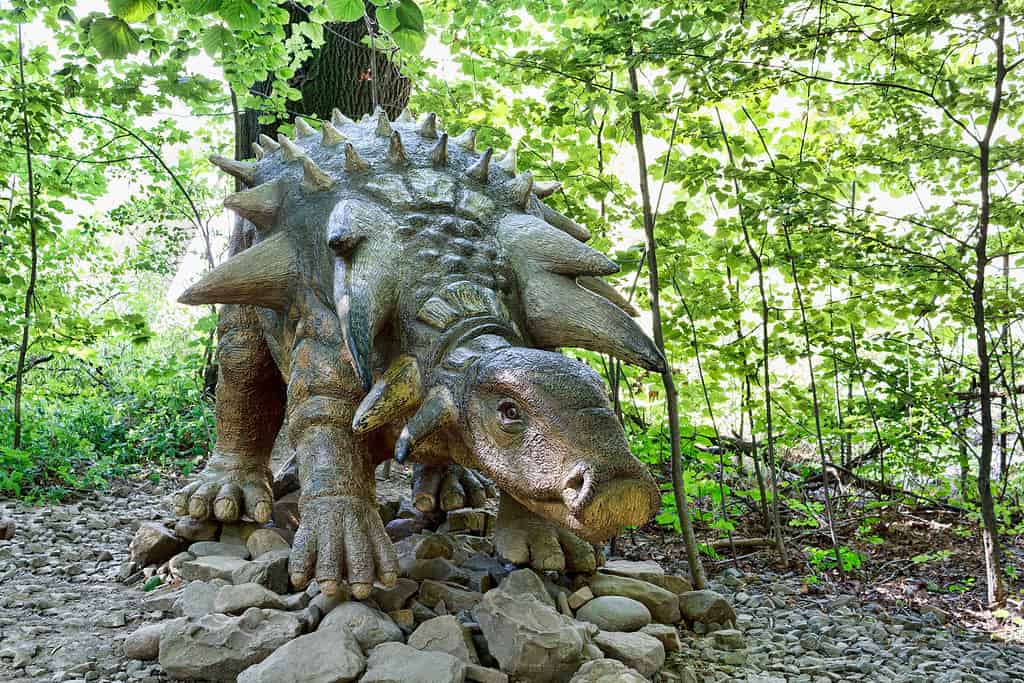
The Edmontonia prefers to live in canyons.
©Artush/Shutterstock.com
The first dinosaur that starts with E is the Edmontonia, a dinosaur that lived during the Late Cretaceous period until 66 million years ago. It preferred an herbivorous diet, and paleontologists have already found 21 different specimens in South Dakota, Montana, and other North American locations. It also had a tank-like body with oval bony plates on its head and back.
Edmontosaurus
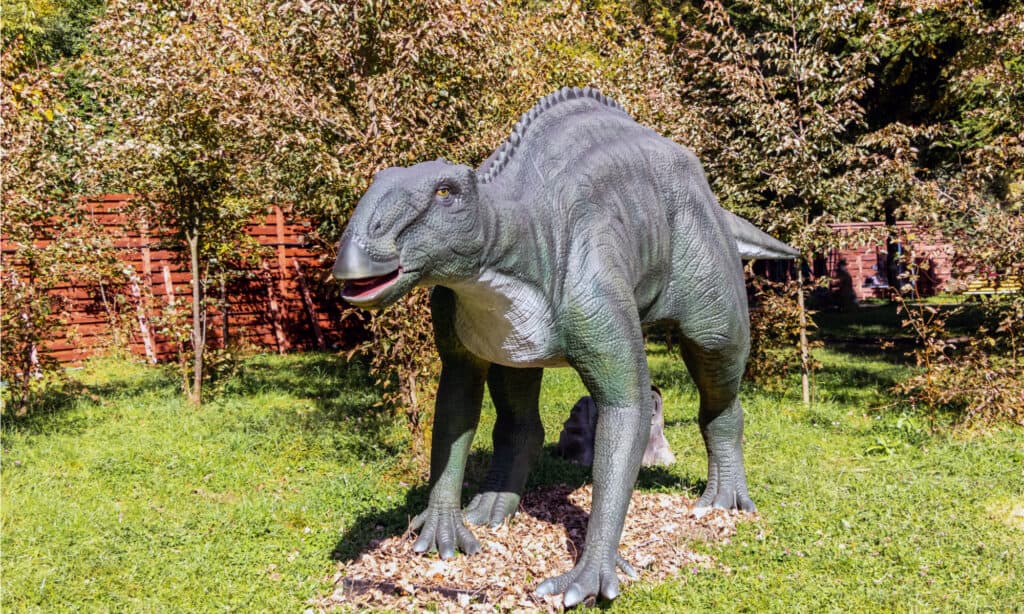
Edmontosaurus lived in North America.
©MVolodymyr/Shutterstock.com
The majority of Edmontosaurus specimens were located in Canada and the northern United States. It lived in canyons during the Coniacian Age, eating the same herbivorous diet as the Edmontonia. There are two species currently recognized – Edmontosaurus regalis and Edmontosaurus annectens. It’s the last dinosaur without a relationship to today’s birds currently discovered.
Eotrachodon

This duck-billed dinosaur had an herbivorous diet.
©Nobu Tamura email:[email protected] http://spinops.blogspot.com/ http://paleoexhibit.blogspot.com/, CC BY-SA 4.0 – Original / License
Originally found in 2016, the Eotrachodon presumably lived during the Santonian Age until 83.5 million years ago. To date, the only confirmed specimen ever found was in Alabama, but this fossil was a partial skeleton with a fairly intact skull.
Epidexipteryx
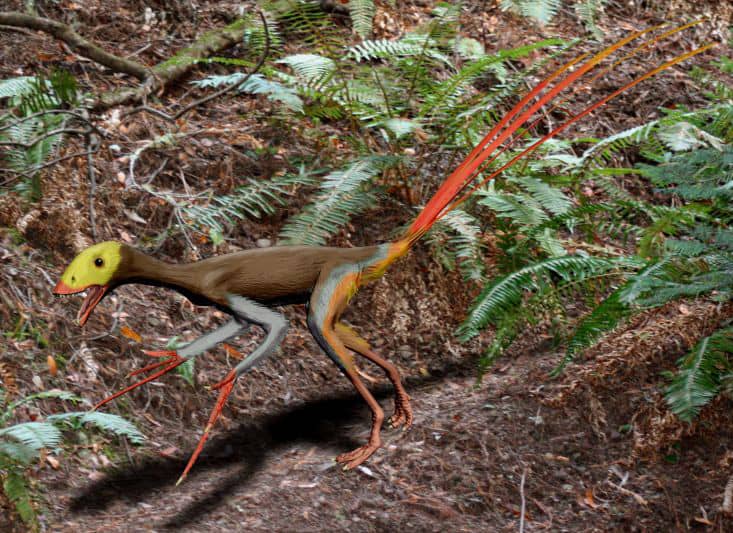
The only specimen of the Epidexipteryx ever found came from China.
Believed to roam the earth until the Oxfordian Age, the Epidexipteryx preferred land, allowing it to seek out other animals as prey. The carnivorous paravian dinosaur had the earliest known ornamental feathers. A partial skeleton was found in Hebei (China) with four long tail feathers.
Euoplocephalus
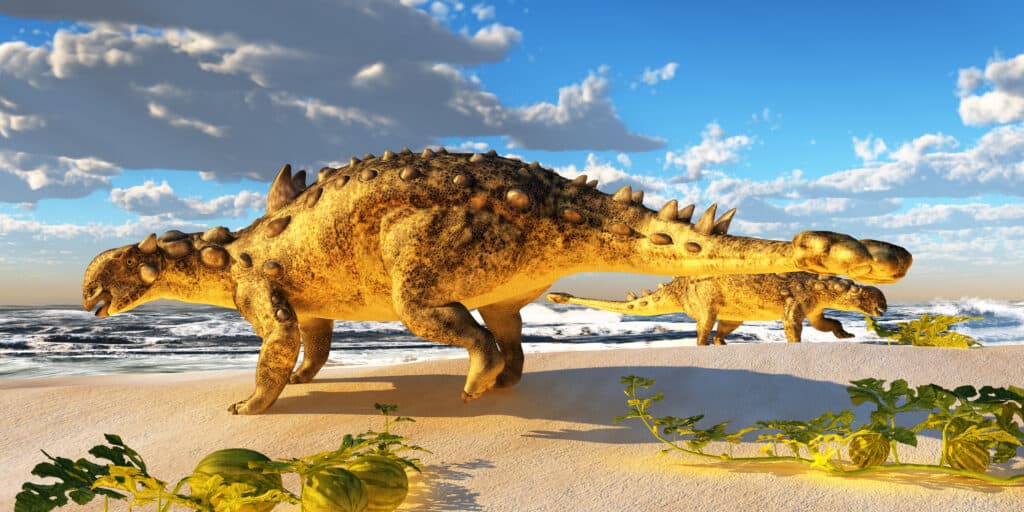
Euoplocephalus is a large ankylosaurid dinosaur that was originally found in 1897.
©Catmando/Shutterstock.com
The herbivorous Euoplocephalus has been found in multiple places worldwide, including Canada, China, and Montana. They lived during the Cretaceous period 83.6 million years ago, though researchers believe they died in the Maastrichtian Age. Based on the current fossils, paleontologists believe they weighed over 2 short tons.
Eustreptospondylus
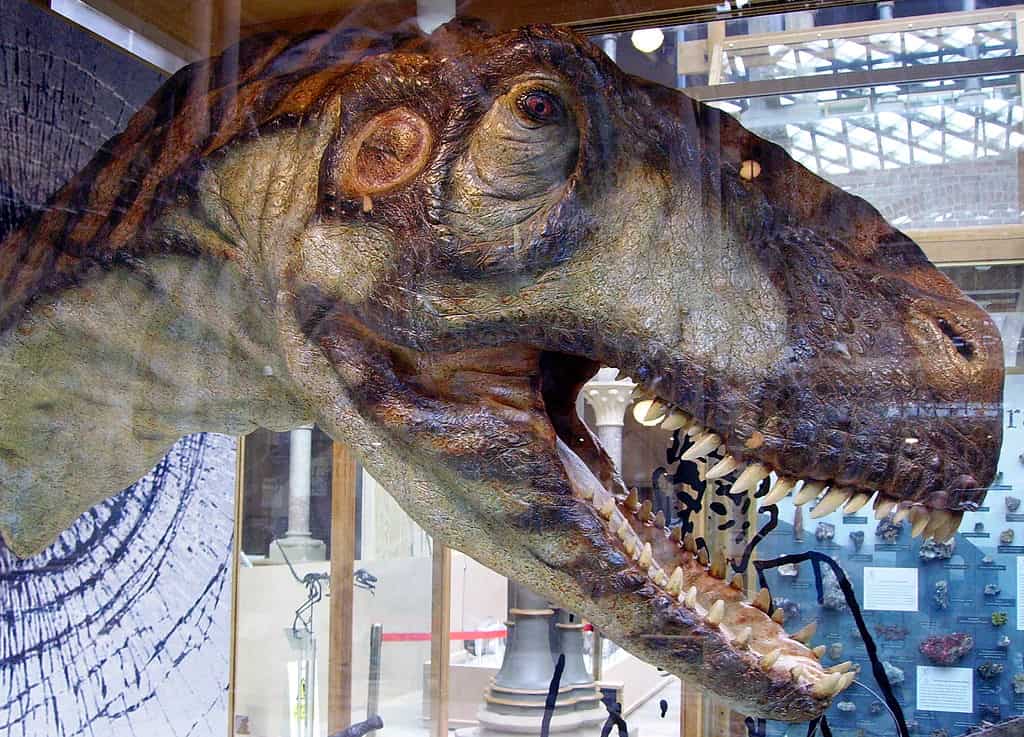
Eustreptospondylus was a megalosaurid theropod dinosaur of the Late Jurassic period in present-day England.
©Ballista at English Wikipedia | CC BY-SA – Original / License
The Eustreptospondylus fossils available today aren’t the adult size of this reptile, but current research projects that they grew to be 15.2 feet long. Weighing over 400 pounds, these sizeable creatures hunted down smaller dinosaurs as their main food source. Their name means “true Streptospondylus.”
Erliansaurus

“Erliansaurus” means “Erlian lizard” for the Mongolian town where it was discovered.
Believed to be a dinosaur of the Late Cretaceous Period, this dinosaur’s remains were found in 1999 in Mongolia. It lived in Asia, roaming the land for its food. It had a plant-based diet, but the only remains ever discovered were in the Mongolian site for which it received its name.
Echinodon
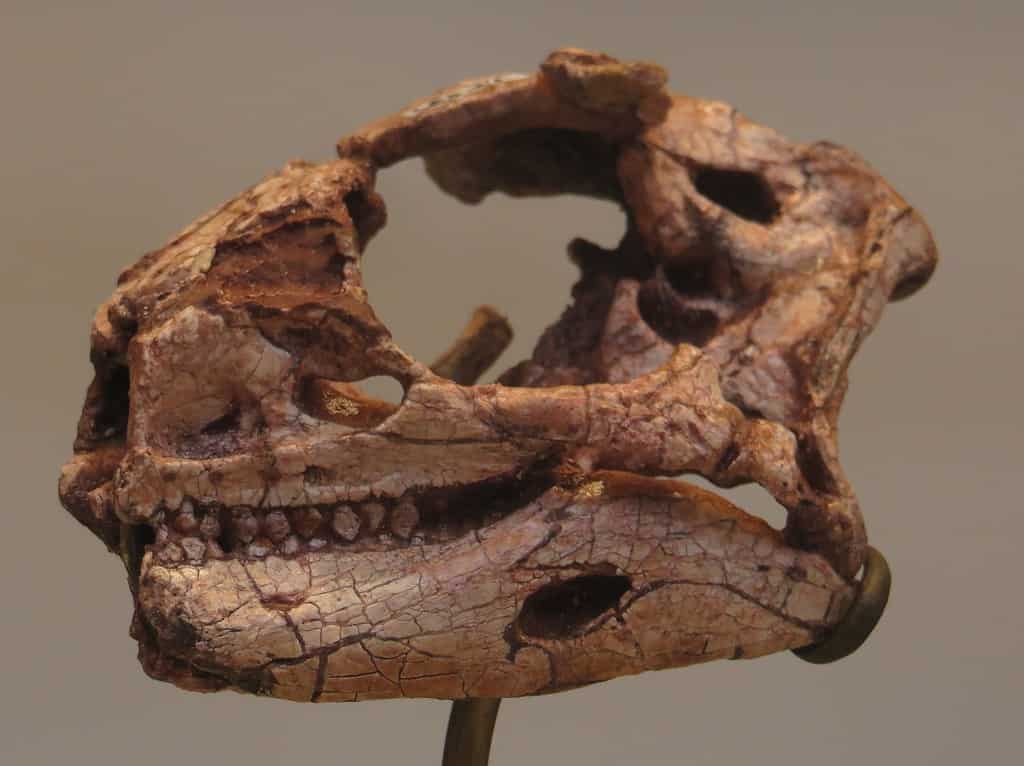
Echinodon primarily lived in Europe.
Dating back to the Cretaceous period, the Echinodon primarily ate plants, making it an herbivore. This dinosaur laid eggs on land to procreate. The original fossils of this dinosaur were jaw bones discovered in 1861. Based on its placement in the Berriasian Age of the period, researchers believe it was also the smallest of its kind.
Ekrixinatosaurus

The carnivorous Ekrixinatosaurus primarily lived in South America.
Ekrixinatosaur is a dinosaur that lived during the Cretaceous period, with one specimen on record. This fossil, which was a skull, was found in Argentina. The skull is much smaller than other reptiles with similar diets and features a curved jaw. Due to its preference for land-based habitats, this dinosaur most likely lived with turtles, fish, frogs, snakes, and crocodiles, but they mostly likely served as prey.
Equijubus

Equijubus was a hadrosauroid dinosaur whose name means “horse mane.”
Discovered near Mǎzōng Mountain, the name “Equijubus” comes from the Latin words “equus” and “juba.” It lived during the Early Cretaceous period in China, and it was one of the earliest creatures with a duck-billed mouth.
Additional Dinosaurs That Start With E
Along with the 10 reptiles above, the others start with the letter E.
- Efraasia is a basal sauropodomorph dinosaur with an herbivorous diet during the Late Triassic period.
- Einiosaurus, a centrosaurian ceratopsian dinosaur whose name means “bison lizard.”
- Elaltitan, a lithostrotian sauropod dinosaur that lived during the Late Cretaceous period.
- Elaphrosaurus, a ceratosaurian theropod dinosaur that lived during the Late Jurassic Period could grow up to 20 feet long.
- Elemgasem, a brachyrostran abelisaurid found in Argentina and named for a Tehuelche god.
- Elmisaurus, a caenagnathid dinosaur of the Late Cretaceous period whose name is also the Latin word for “rare.”
- Elopteryx, a maniraptoran theropod dinosaur that lived during the Late Cretaceous period found in today’s Romania in the early 20th century.
- Elrhazosaurus, a basal iguanodontian dinosaur whose name means “Elrhaz lizard.”
- Emausaurus, an armored dinosaur from the Early Jurassic Period found in Germany.
- Enigmosaurus, a therizinosauroid that lived during the Late Cretaceous period whose name means “enigmatic lizard.”
- Eoabelisaurus, an abelisaurid theropod dinosaur whose name means “dawn” because it is one of the early relatives of the Abelisaurus.
- Eocarcharia, a carcharodontosaurid theropod dinosaur with sharp teeth whose name means “fierce-eyed.”
- Eocursor, a basal ornithischian dinosaur from the Early Jurassic period was only about 3 feet long.
- Eodromaeus, a basal theropod dinosaur whose name means “dawn runner.”
- Eolambia, a hadrosauroid dinosaur whose name means “dawn lambeosaurine.”
- Eomamenchisaurus, a mamenchisaurid sauropod dinosaur from the Middle Jurassic period whose name means “dawn Mamenchisaurus.”
- Eoraptor, a basal sauropodomorph dinosaur might be one of the earliest dinosaurs ever discovered.
- Eosinopteryx, a theropod dinosaur with a single species but with no feathers.
- Eotriceratops, a ceratopsian dinosaur from the Late Cretaceous period with a name that means “dawn three-horned face.”
- Eotyrannus, a tyrannosaurid theropod dinosaur in the Early Cretaceous period with limited remains available.
- Eousdryosaurus, a basal iguanodontian dinosaur found in 2014 that lived during the Upper Jurassic period.
- Epichirostenotes, an oviraptorosaurian dinosaur found in 2011 from the late Cretaceous period.
- Epidendrosaurus, a maniraptoran dinosaur that was the size of a sparrow.
- Erectopus, a basal allosauroid theropod that was first discovered in the 1800s.
- Erketu, a somphospondylan sauropod dinosaur from the Late Cretaceous period.
- Erlikosaurus, a therizinosaurid which means “Erlik’s lizard.”
- Erythrovenator, a basal theropod dinosaur found in Brazil from the Late Triassic period.
- Eshanosaurus, a dinosaur that lived during the Early Jurassic period that researchers discovered from a well-preserved jawbone fossil.
- Eucamerotus, a sauropod dinosaur whose name means “well-chambered.”
- Eucercosaurus, an ornithopod dinosaur whose name means “good-tailed lizard.”
- Eucnemesaurus, a basal sauropodomorph dinosaur, means “good tibia lizard.”
- Euhelopus, a sauropod dinosaur that lived during the Early Cretaceous period, may have weighed up to 22 tons.
- Euronychodon, a coelurosaur dinosaur in Europe and Asia whose name means “European claw tooth.”
- Europasaurus, a basal macronarian sauropod that lived in Germany during the Late Jurassic period.
- Europatitan is a somphospondylan sauropod whose name means “European giant.”
- Europelta, a nodosaurid dinosaur of the Early Cretaceous period could’ve been 16 feet tall.
- Euskelosaurus, a sauropodomorph dinosaur recovered from South Africa that lived during the Late Triassic period.
The photo featured at the top of this post is © Daniel Eskridge/iStock via Getty Images
Thank you for reading! Have some feedback for us? Contact the AZ Animals editorial team.







